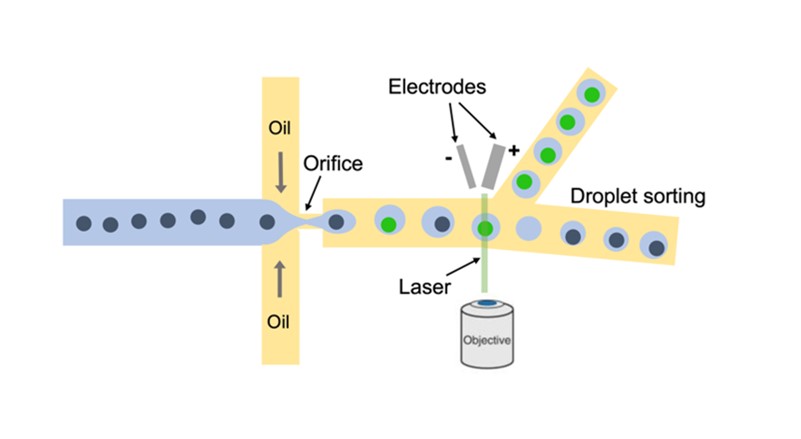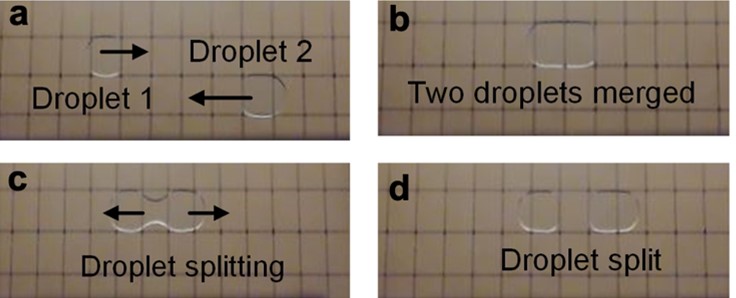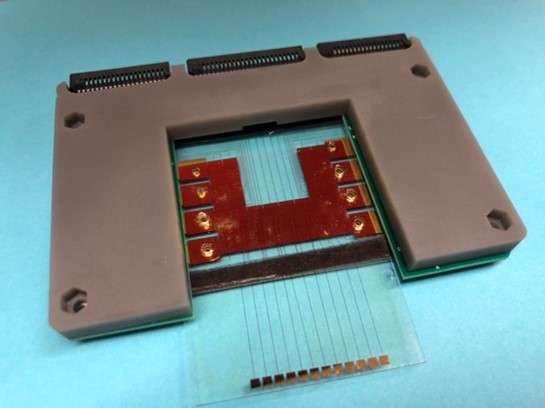Research
Focus area 1: Investigate cell-cell interactions at single-cell level
The Integrated Microfluidics and Microsensors Laboratory has research focus on deciphering the interaction among single cells, especially the interaction between immune and microbial cells, as well as intratumor cell interactions.
Microbial and immune cell interaction
The relationship between microbes and the immune system plays a key role in infectious diseases. Microbes provide signals that train, stimulate and functionally adjust many aspects of the host's immune system, while the immune system has an essential part in the susceptibility, persistence and clearance of various infections. This correlation has been revealed by major tools including animal models, population-level 16S rRNA gene and metagenomic sequencing, however, the underlying mechanism is relatively undefined due to the complexity of this ecosystem and the limitations of these tools.
The Integrated Microfluidics and Microsensors Laboratory aims to understand how the biological functions of the microbial and immune cells co-evolve during an infection with single-cell resolution using droplet microfluidic technology. This platform will enable us to study the behaviors of single microbial and immune cells during their initial encounter, enhancing our understanding of how one influences the other at the onset of infections. This information can offer mechanistic insights on how these two functionally co-evolve over the course of an infection. Better understanding the underlying mechanisms that advance an infection will help inform effective strategies for disease control.

Scheme of droplet microfluidic technology.
Intra-tumor interaction
In the same manner, we also are using the droplet microfluidic platform to analyze the interactive behaviors among single cancer cells can enhance our understanding of cancer progression at a microscopic level. This information can offer mechanistic insights on how the interaction among individual cancer cells at a microscale level can lead to the malignancy progression observed at a macroscale level.
Focus area 2: Develop microfluidic tools for rapid diagnosis and therapeutic monitoring
The Integrated Microfluidics and Microsensors Laboratory has a vision to develop and integrate cutting-edge technologies including microfluidics, microsensors and personal electronics to shift the paradigms of diagnosis and therapeutic monitoring to benefit a wide range of population.
Multiplexed digital microfluidic platform for monitoring immune response to cancer immunotherapy
Immunotherapies have emerged as a reputable pillar of cancer treatment. Yet the response rate remains low. For example, the overall response rate of immune checkpoint inhibitors (e.g., anti-PD1/PD-L1) is only 10% to 30%. Even in most initial responders, drug resistance evolves, which is a key barrier to long-term remission. Various biomarkers, including peripheral blood mononuclear cells, extracellular vesicles and soluble proteins, have emerged as noninvasive indicators of the therapeutic response. Standard methodologies to detect these biomarkers require time-consuming sample preparation, and are often located in different lab facilities, posing logistic limitations to closely monitoring patients' responsiveness to immunotherapies.
The Integrated Microfluidics and Microsensors Laboratory is developing a multiplex point-of-care digital microfluidic platform that can rapidly profile a panel of biomarkers that are key indicators of response to immunotherapies in microliters of blood, in a single test. Briefly, digital microfluidics is a technology that handles droplets on electrode arrays. Compared with most microfluidic platforms, this platform supports programmed handling of droplets on electrode arrays based on electrowetting principles, such as droplet transport, splitting and mixing, without the need for complex experimental setup. We integrate microsensors into the electrode arrays to detect various type of molecules in one sample, making it ideal for multiplexed detection in small volumes in a single test.

Droplet transport, merge and split on electrode arrays in a DMF device.

A digital microfluidic device integrated with microsensor arrays.
Rapid bacterial diagnosis in a digital microfluidic platform
Bacterial diagnosis often relies on detecting the DNA of various microorganisms ranging from bacterial pathogens in clinical and environmental samples to harmful foodborne microbial species. Standard bacterial detection includes microbial culture, qPCR, and more recently, whole genome sequencing. However, it is often logistically challenging to perform the multistep process, which includes DNA extraction, whole genome amplification, next-generation sequencing and bioinformatics analysis within a short turnaround time, which is essential in urgent cases and medical emergencies.
The Integrated Microfluidics and Microsensors Laboratory uses novel technologies including a digital microfluidic device and an Oxford Nanopore MinION sequencer to address this challenge. In this integrated platform, it is possible to sequence and detect as low as single bacterial DNA with high purity within a few hours. The approach also showed success in identifying bacterial species within samples with multiple bacteria.
This work paves the way for rapidly identifying low biomass bacterial species in urgent settings. Further advancements will focus on the integration of human cell depletion strategies to enable expanded usability for translational applications, as well as the improvement of amplification strategies to increase genome coverage for further analysis such as antibiotic susceptibility. Examples include the rapid detection of bacterial sepsis in blood, which can rapidly become a life-threatening condition.